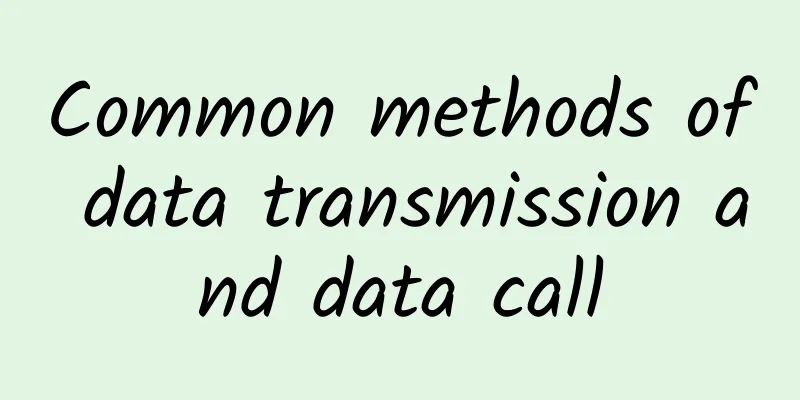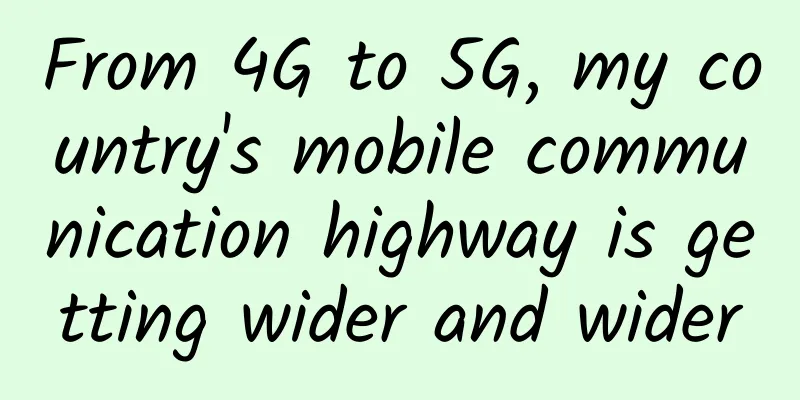12 Questions about Routing! Do you know all of them?

|
1. When to use multiple routing protocols? When two different routing protocols need to exchange routing information, multi-routing protocols are used. Of course, routing redistribution can also exchange routing information. It is not necessary to use multiple routing protocols in the following situations:
2. What is a distance vector routing protocol? Distance vector routing protocols are designed for small network environments. In large network environments, such protocols will generate large traffic and occupy too much bandwidth when learning and maintaining routes. If it does not receive a routing table update from a neighboring site within 90 seconds, it will consider the neighboring site unreachable. Every 30 seconds, the distance vector routing protocol sends the entire routing table to the neighboring site so that the routing table of the neighboring site can be updated. In this way, it can collect a list of networks from other sites (directly connected or otherwise connected) for routing selection. The distance vector routing protocol uses the number of hops as a metric to calculate the number of routers to reach the destination. For example, RIP uses the Bellman-Ford algorithm to determine the shortest path, that is, the route that can reach the destination with the minimum number of hops. The maximum allowed number of hops is usually set at 15. Terminals that must pass through more than 15 routers are considered unreachable. There are several distance vector routing protocols: IP RIP, IPX RIP, Apple Talk RTMP and IGRP. 3. What is a link state routing protocol? Link state routing protocols are more suitable for large networks, but due to its complexity, routers require more CPU resources. It can find broken links or newly connected routers in a shorter time, making the convergence time of the protocol shorter than that of distance vector routing protocols. Usually, if it does not receive a hello message from a neighbor within 10 seconds, it considers the neighbor unreachable. A link-state router sends update messages to its neighbors, notifying them of all the links it knows about. The metric that determines the optimal path is a numerical cost, which is generally determined by the bandwidth of the link. The link with the smallest cost is considered the best. In the shortest path first algorithm, the maximum possible cost can be almost infinite. If there are no changes in the network, the router only needs to refresh the unupdated routing table periodically (the period can be from 30 minutes to 2 hours). There are several link state routing protocols: IP OSPF, IPX NLSP and IS-IS. Can a router use both distance vector routing protocols and link state routing protocols? Yes. Each interface can be configured to use a different routing protocol; however, they must be able to exchange routing information by redistributing routes. (Route redistribution is discussed later in this chapter.) 4. What is an access list? The access list is a series of rules added by the administrator to control the input and output of data packets in the router. It is not generated by the router itself. The access list can allow or prohibit data packets from entering or outputting to the destination. The entries in the access table are executed sequentially, that is, when a data packet arrives, it is first checked to see if it is subject to the constraints of the first entry. If not, it is executed sequentially downwards; if it matches the first entry, whether it is allowed or prohibited, there is no need to check the following entries. Each interface can have only one access list for each protocol. What types of access tables are supported? An access list can be identified by its number. The specific protocols and their corresponding access list numbers are as follows:
Tip: In Cisco IOS Release 11.2 or later, you can use named access lists to identify access lists numbered 1 to 199. 5. How to create an IP standard access list? The creation of an IP standard access list can be completed by the following command:
In this command:
The following is an example of an access list in a router configuration file:
6. When to use route redistribution? Route redistribution is usually configured on routers that are responsible for learning routes from one autonomous system and then advertising them to another autonomous system. If you are using IGRP or EIGRP, route redistribution is usually performed automatically. 7. What is administrative distance? Administrative distance refers to the routing credibility of a routing protocol. Each routing protocol is assigned a trust level in descending order of reliability, and this trust level is called administrative distance. For routing information from two different routing protocols to a destination, the router first decides which protocol to trust based on the administrative distance. 8. Why is it important to identify adjacent routers? In a small network, locating neighboring routers is not a major problem because when a router fails, the other routers can converge in an acceptable time. But in a large network, the delay in discovering a failed router can be significant. Knowing the neighboring routers can speed up convergence because the routers can learn about the failed router faster because the interval between hello messages is shorter than the interval between routers exchanging information. A router using a distance vector routing protocol can only detect that an adjacent router is unreachable when the adjacent router does not send routing updates, which usually takes 10 to 90 seconds. A router using a link state routing protocol can detect that an adjacent router is unreachable when it does not receive a hello message, which usually takes 10 seconds. How do distance vector routing protocols and link state routing protocols discover neighboring routers? A router using a distance vector routing protocol creates a routing table that includes the networks directly connected to it, and sends this routing table to the routers directly connected to it. The neighboring router merges the received routing table into its own routing table, and it also sends its own routing table to its neighboring routers. Routers using link-state routing protocols create a link-state table that includes a list of destinations for the entire network. In an update message, each router sends its entire list. When the adjacent router receives the update message, it copies the contents and sends the information to its neighbor. There is no need to recalculate the routing table contents when forwarding them. Note that routers using IGRP and EIGRP broadcast hello messages to discover neighbors and exchange routing updates just like OSPF. EIGRP keeps a neighbor table for each network layer protocol that includes the address of the neighbor, the number of messages waiting in the queue to be sent, the average time it takes to receive or send messages to a neighbor, and the time it takes to not receive any messages from a neighbor before determining that the link is down. 9. What is an autonomous system? An autonomous system is a group of routers and networks under the control of an administrative agency. It can be a router directly connected to a LAN and also connected to the Internet; it can be multiple LANs interconnected by an enterprise backbone network. All routers in an autonomous system must be interconnected, run the same routing protocol, and be assigned the same autonomous system number. Links between autonomous systems use external routing protocols, such as BGP. 10. What is BGP? BGP (Border Gateway Protocol) is a routing protocol that dynamically exchanges routing information between autonomous systems. The classic definition of an autonomous system is a group of routers under the control of an administrative agency, which uses IGP and common metrics to forward messages to other autonomous systems. The term autonomous system is used in BGP to emphasize the fact that the management of an autonomous system provides a unified internal routing plan to other autonomous systems, which provides a consistent description of the networks that can be reached through it. 11. What types of sessions does BGP support? The BGP session between adjacent routers is established on the TCP protocol. The TCP protocol provides a reliable transmission mechanism and supports two types of sessions:
BGP routers can be located anywhere in the autonomous system, even with several routers in between. Note that the initial data stream contains the entire BGP routing table. But when the routing table changes later, the router only transmits the changed part. BGP does not need to periodically update the entire routing table. Therefore, during the period when the connection is established, a BGP sender must save the entire BGP routing table shared by all current peer routers. BGP routers periodically send Keep Alive messages to confirm that the connection is active. When an error or special situation occurs, the router sends a Notification message. When an error occurs in a connection, a notification message is generated and the connection is disconnected. 12. Does BGP allow route redistribution? Yes. Because BGP is mainly used for routing between autonomous systems, it must support the integration of RIP, OSPF, and IGRP routing tables in order to transfer their routing tables into an autonomous system. BGP is an external routing protocol, so it operates differently than an internal routing protocol. In BGP, you can create a route in the BGP routing table using the NETWORK command only if the route already exists in the IP routing table. |
<<: Hard-core science! Analysis of the technical principles of number portability!
Recommend
HostYun offers 10% off on all items, with monthly payments starting from 13.5 yuan for Korean VPS and 22.5 yuan for Tokyo IIJ lines
HostYun is a VPS hosting brand founded in 2008. I...
Comprehensive Anatomy of Data Center Facility Planning and IT Operations Checklist
Making the right choices in terms of data center ...
Baidu can't stand it
Lao Lao Noodles Source: https://www.nowcoder.com/...
The fourth largest operator enters the market, and the 5G market welcomes a new growth point
It has been three years since my country issued f...
Four ways to ensure service availability in the face of traffic bursts
Preface Have you ever had this experience? A larg...
Tragicservers: $7/year OpenVZ-128MB/10GB/500GB/Los Angeles
It has been more than a year since I shared the n...
5G network needs to save money by relying on these four key technologies
[[385335]] This article is reprinted from the WeC...
Seven steps to SD-WAN deployment
The benefits of software-defined WANs are appeali...
HostDare: 25% off NVMe disk VPS in Los Angeles starting at $19.49/year
HostDare has launched a new promotion for the Los...
A world first! Traffic lights are used as 5G base stations: Japan has come up with a wave of cool operations
The small signal coverage range of 5G base statio...
RAKsmart popular servers start at $30/month, 1Gbps unlimited traffic servers start at $99/month, US/Hong Kong/Korea/Japan data centers
RAKsmart has started its promotion this month. It...
What is the principle of communication? It turns out to be so simple
What is Communication? Simply put, communication ...
The rise and fall of online storage in the past decade: persistence is not easy, and free storage is not sustainable
Network storage has always been a way of storing ...
3 outages within 1 month, is the 5G core public cloud reliable?
[[442675]] This article is reprinted from the WeC...
What comes after 5G communications?
This topic seems a bit paradoxical. First of all,...









